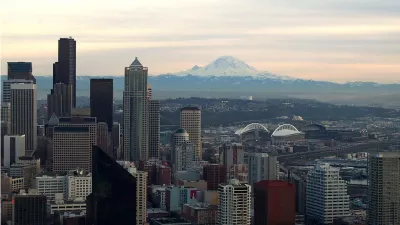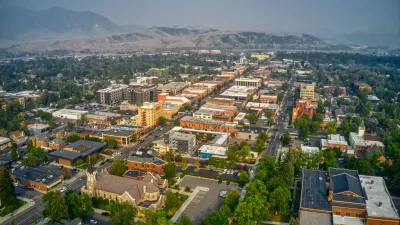The perception that a city has reached its maximum population and nobody else should be allowed in, or nothing should be allowed to change, is limiting the potential of our cities and increasing housing inequality.

Emily Badger of The Washington Post's Wonkblog tackles the question of how we determine when a city just can't take any more people by comparing our densest cities with those around the world, and discovering we're not necessarily as dense as we think. Further, an increase in population in one area results in economic and environmental benefits.
"Put more and more workers in one place, meanwhile, and you also get buzzing hubs like New York's Garment District or Boston's biotech corridor, where people working on the same problems bump into each other and share ideas and suppliers and become more productive. Put more people in a city, and the economy grows. It's the opposite of diminishing returns. The environmental costs, per person, can actually improve. In drought-stricken California, some of the lowest water consumption per capita is in San Francisco."
Badger notes that the use of environmental laws by NIMBYs, particularly in California, has led to greater economic inequality. The cost of housing has continued to rise as residents have blocked new housing, thereby limiting the supply for newcomers and stopping the natural evolution of our cities.
FULL STORY: There is no such thing as a city that has run out of room

Alabama: Trump Terminates Settlements for Black Communities Harmed By Raw Sewage
Trump deemed the landmark civil rights agreement “illegal DEI and environmental justice policy.”

Planetizen Federal Action Tracker
A weekly monitor of how Trump’s orders and actions are impacting planners and planning in America.

The 120 Year Old Tiny Home Villages That Sheltered San Francisco’s Earthquake Refugees
More than a century ago, San Francisco mobilized to house thousands of residents displaced by the 1906 earthquake. Could their strategy offer a model for the present?

In Both Crashes and Crime, Public Transportation is Far Safer than Driving
Contrary to popular assumptions, public transportation has far lower crash and crime rates than automobile travel. For safer communities, improve and encourage transit travel.

Report: Zoning Reforms Should Complement Nashville’s Ambitious Transit Plan
Without reform, restrictive zoning codes will limit the impact of the city’s planned transit expansion and could exclude some of the residents who depend on transit the most.

Judge Orders Release of Frozen IRA, IIJA Funding
The decision is a victory for environmental groups who charged that freezing funds for critical infrastructure and disaster response programs caused “real and irreparable harm” to communities.
Urban Design for Planners 1: Software Tools
This six-course series explores essential urban design concepts using open source software and equips planners with the tools they need to participate fully in the urban design process.
Planning for Universal Design
Learn the tools for implementing Universal Design in planning regulations.
Clanton & Associates, Inc.
Jessamine County Fiscal Court
Institute for Housing and Urban Development Studies (IHS)
City of Grandview
Harvard GSD Executive Education
Toledo-Lucas County Plan Commissions
Salt Lake City
NYU Wagner Graduate School of Public Service





























